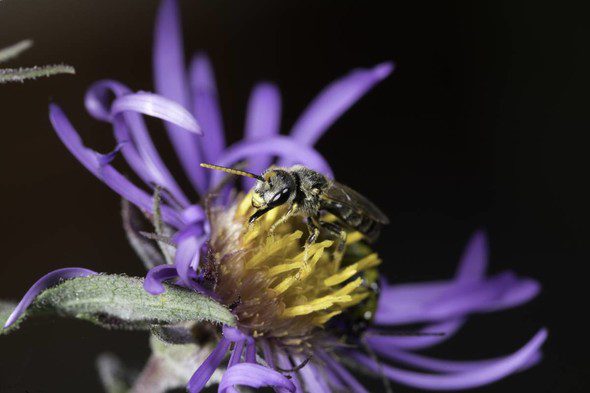
Plant natives in your yard and become a wildlife hotspot
JEFFERSON CITY, Mo. – Lawnmowers aren’t the only buzzing people will hear outdoors this spring. A variety of Missouri’s many native bees become active as the weather warms, but their populations are declining. These fuzzy insects are important pollinators, playing a critical role in the production of many favorite fruits and vegetables. The Missouri Department of Conservation (MDC) encourages the public to “bee-friend” these valuable insects this season.
Missouri is home to around 450 species of native bees, but it’s not uncommon for more to be identified each year. Several common bees found in Missouri include the bumblebee, sweat bee, leafcutter bee, miner bee, and the larger carpenter bee.
Most native bees only live about one year. They emerge in the spring as adults, visiting flowers and building nests. Some species, such as bumblebees, make their nests underground, while others, such as leafcutter and mason bees, will nest in small cavities found in wood or in the pith of plant stems.
Throughout their lifecycle, bees pollinate flowering plants that provide food, fiber, and even medicines. Bee pollinators’ national value is around $30 billion annually, and they are responsible for 1 in 3 bites of food Americans eat. Without bees and other pollinators, humans would not have foods such as nuts, grapes, coffee, and even chocolate.
BEE A FRIEND
There are many ways the public can support Missouri’s native bees, but the best way is to plant native plants.
“It’s all about the flowers,” said MDC Urban Wildlife Biologist Erin Shank. “Planting native plants, especially those with colorful blossoms, is a great way to bring bees to your yard because the color catches their eye.”
Shank also explained that companion planting, in which one plant helps the growth of another, can help facilitate the pollination of fruits and vegetables. For example, planting bee balm can help pollinate tomatoes, peppers, and eggplant. Other flowering companion plants include sunflowers, blue wild indigo, wild hyacinth, purple prairie clover, and common milkweed.
Flowering trees and shrubs, such as redbud, American plum, and golden currant are also great options for pollinators.
No green thumb? No problem. Shank noted that people can support bees by not mowing their lawn as much.
“Clover, violets, and dandelions are common lawn plants that provide vital food for bees – especially in the spring before most flowers appear,” she explained. “Delaying mowing or mowing higher can help bees by letting the plants grow. Even allowing access to the ground by not mulching every inch can help. Many bees need access to the soil to excavate their nests.”
A yard isn’t required to help bee populations and other pollinators. People can offer bees native flowers in a planting box or pot, or by getting involved in a community garden or helping plant at a nearby park.
“Some may see bees as an outdoor nuisance, but they play a critical role in food production and the health of our natural communities,” stressed Shank. “By making small strides to plant native flowers and shrubs, Missourians can support bee health and habitat.”
To find a native plant retailer near you, visit the Missouri Prairie Foundation’s Grow Native! website at grownative.org.
Learn more about Missouri’s native bee species on MDC’s online Field Guide at https://short.mdc.mo.gov/4Up.














